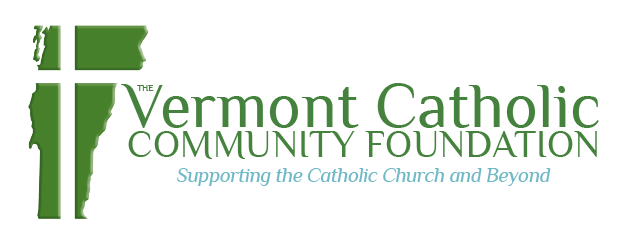
Vermont Catholic Community Foundation
The Vermont Catholic Community Foundation has grown during the last two years from 20 to almost 50 funds supporting a variety of Catholic ministries and charitable causes throughout Vermont. One major area of growth has been Catholic education. Financial Aid Scholarship Funds designated by donors to provide
financial assistance to students who otherwise could not attend Catholic schools have tripled in the last year.
Another avenue for families seeking ways to afford K-12 Catholic education is the 529 savings plans. Created in 1996 by Congress, 529 savings plans have been a
popular tax-advantaged vehicle to save for college tuition. Recent changes to the law now allow these plans to be used for K-12 tuition.
“Much like the way 401(k) plans changed the world of retirement savings a few decades ago, 529 savings plans have changed the world of education savings,” said
Brigette White, a VCCF Board member and partner at Hickok & Boardman Financial Planning.
Tax Advantages
529 savings plans offer a unique combination of features that no other education savings vehicle can match:
Federal tax advantages
Contributions to a 529 account accumulate tax deferred, and earnings are tax free if the money is used to pay the beneficiary’s qualified education expenses. (The earnings portion of any withdrawal not used for qualified education expenses is taxed at the recipient’s rate and subject to a 10 percent penalty).
Vermont tax advantages
Although 529 savings plans are a creature of federal law, their implementation is left to the states. The Vermont’s Higher Education Savings Plan is by managed by VSAC: vheip.org.
- A state income tax credit of 10 percent of the first $2,500 contributed to VHEIP per beneficiary per tax year is available to any Vermont taxpayer (or, in the case of a married couple filing jointly, 10 percent of the first $5,000 contributed per beneficiary) — a tax credit worth up to $250 per beneficiary ($500 per beneficiary for married couples filing jointly). Gifts made by a Vermont taxpayer to any VHEIP account are also eligible for the credit.
- Maximum contribution limit is $352,800. Accounts may continue to accrue earnings even if they have reached the maximum account contribution limit, but no more contributions will be accepted.
- Unlimited participation: Anyone can open a 529 savings plan account, regardless of income level.
- Flexibility: Under federal rules, you are entitled to change the beneficiary of your account to a qualified family member at any time as well as roll over (transfer) the money in your account to a different 529 plan once per calendar year without income tax or penalty implications.
- Accelerated gifting: 529 savings plans offer an estate planning advantage in the form of accelerated gifting. This can be a favorable way for grandparents to contribute to their grandchildren’s education while paring down their own estate or a way for parents to contribute a large lump sum.
To learn more about 529 savings plans in Vermont visit: vheip.org.
To learn more about the Vermont Catholic Community Foundation and established funds, visit vtcatholicfoundation.org or contact Ellen Kane at 802-658-6110 ext. 1226 or ekane@vermontcatholic.org.
—Originally published in the Fall 2018 issue of Vermont Catholic magazine.

